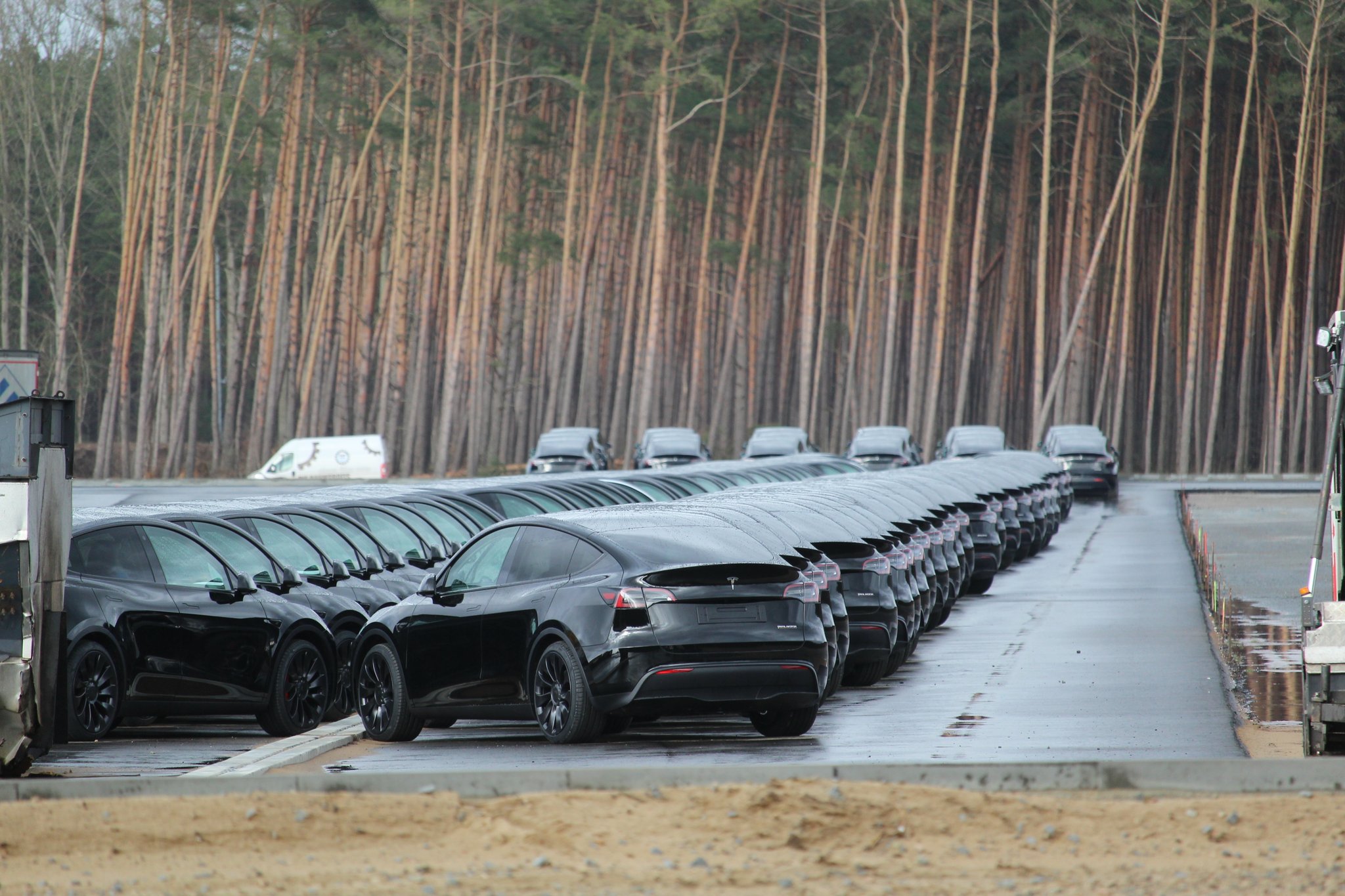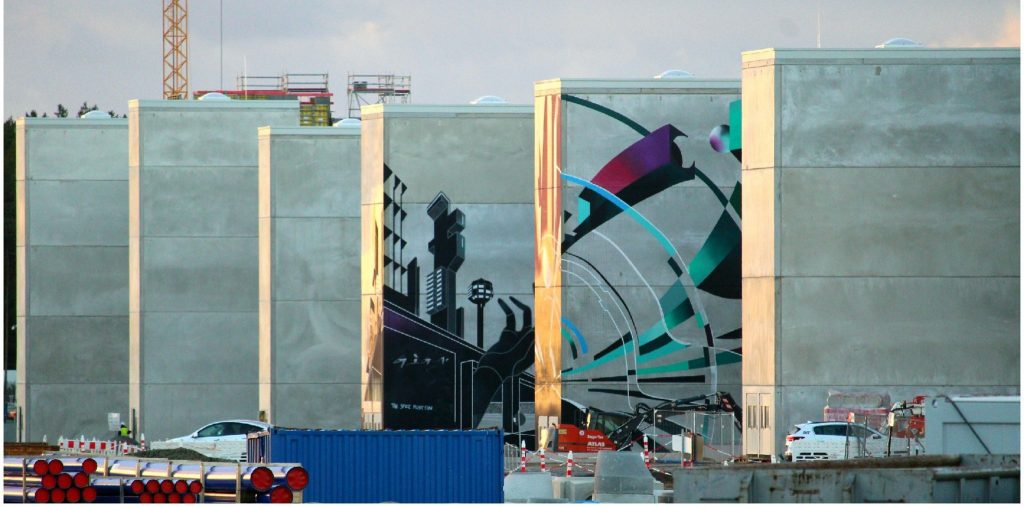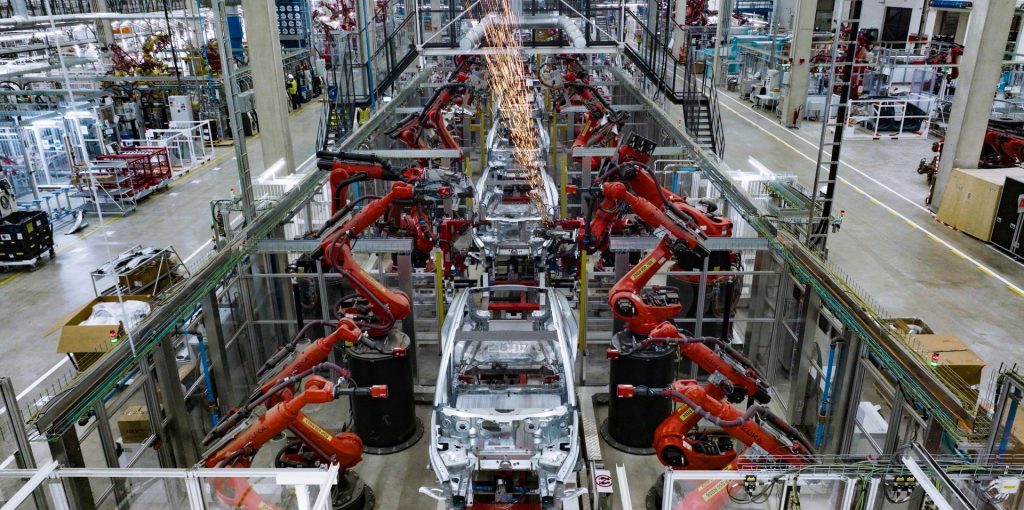

News
Tesla formally wins final environmental approval to open Gigafactory Berlin
The wait is finally over. After a long process that saw delays, controversies, and other drama, Tesla Gigafactory Berlin has won its final environmental approval from Germany. An official document confirming the update was published by the State of Brandenburg, outlining the next steps that the electric vehicle maker needs to do to start vehicle production in its Germany-based electric vehicle factory.
As per the state’s press release, the approval for Giga Berlin covers several activities, such as the production of up to 500,000 vehicles per year. The approval also includes battery cell production activities within the Giga Berlin complex, which should allow Tesla to manufacture its in-house cells from within Germany.
“The project, which was approved with the 536-page decision, includes the plant for the production of up to 500,000 vehicles per year, aluminum smelting plants and an aluminum foundry, plants for surface treatment, heat generation, and storage. The facility also includes battery cell production, an operational wastewater treatment plant, a fire brigade equipment house, a high-bay warehouse, as well as laboratories and workshops,” the press release read.

It should be noted that while it may have taken two years to get to this point, Gigafactory Berlin’s formal approval was still completed in a quick manner, at least relatively speaking. The past two years, after all, required the State Office of the Environment to not only inspect and approve the factory itself, but also the entire industrial area with several large-scale facilities. Environment Minister Alex Vogel expressed his thanks to the state’s employees and other authorities for Giga Berlin’s quick approval process.
“As a high-performing state administration, you have always focused on the technical requirements, the high level of protection of the environment, the protection of the general public and the neighborhood from dangers, even under the pressure of great public interest and unreasonable harassment as well as the legal certainty of the procedure. In times of climate crisis, the availability of water will play an increasingly important role for future developments and settlements. Above all, digitization can help to simplify and accelerate processes without restricting environmental standards and participation rights,” Vogel said.
District Administrator Rolf Lindemann emphasized that Giga Berlin benefits the region. The fact that the project faced much adversity, and was still able to achieve a milestone such as a final environmental approval in a relatively short time, proves that the project’s potential is vast. He also noted that Giga Berlin, as well as those that have been working with Tesla over the past two years to approve the project, shall face whatever challenges lie ahead with vigor.
“The Oder-Spree district described the Tesla Gigafactory as a real stroke of luck for the development of our region. We have therefore mobilized all our strength to help turn this unique opportunity into a visible success. It wasn’t always easy, and we’re anything but done when it comes to the final form of the overall project. But we all have reason to be proud of what we have achieved so far, despite all prophecies of doom.
“That is why we will face the further challenges that lie ahead with confidence and with undiminished vigor. I am referring to the official support of the further expansion stages, the completion of the battery factory and of great importance, especially for local politics: as far as possible, a stress-free integration of the Gigafactory into the traffic infrastructure . However, in order to be able to meet the sustainability aspect and smooth mobility in connection with production, it is of course necessary to start building housing close to the location and to create the associated social infrastructure. We trust in the same support from the state government that we have been able to rely on in the past,” Lindemann said.

While Giga Berlin’s final environment approval has been secured, Tesla still has to ensure that it meets the state’s requirements. These are highlighted by the mammoth size of its approval documents, which comprise over 23,700 pages in 66 files. More than 400 ancillary provisions are included, involving topics such as requirements for groundwater protection as well as water-saving and wastewater-reducing measures, species protection measures, limit values for air pollutants and regulations on their measurement as well as occupational safety requirements. Other specific rules on the plant’s operations, particularly with regards to how it affects the area’s groundwater, were also highlighted in the press release.
“There are 113 air pollution control requirements, which include respective chimney heights for each exhaust air stream. In addition, 22 requirements determine the methods and intervals at which the exhaust air is to be measured. 96 requirements for drinking water protection, waste water disposal and rainwater specify, among other things, limit values for discharge into the waste water pressure line and corresponding cleaning processes. When using building materials, it is important to ensure that no harmful substances get into the groundwater. With groundwater monitoring, both the formation of new groundwater and the quality of the groundwater must be checked regularly. In view of the tense water situation, not least due to climate change, it should be possible to react to changes as early as possible.
“After the inspection by the approval authority, the entire system falls under the provisions of the Hazardous Incidents Ordinance (12th BImSchV) and must therefore take special precautions to prevent incidents and limit the effects of incidents, as well as maintain an appropriate safety distance from adjacent protected objects. Tesla must draw up an incident concept and comply with special information obligations,” the press release read.
The state noted that Tesla may now start or continue with the further construction of Giga Berlin and that objections to the project now have “no suspensive effect.” It should be noted, however, that before Tesla can actually put its Model Y production facility into operation, several ancillary provisions must be met first. These provisions, which include the installation of measuring devices for air pollutants and precautions for fire protection and accidents, will be checked by the responsible authorities. Once Tesla completes this step, Model Y production for customer vehicles could finally commence.
Needless to say, all eyes are now focused on how quickly Tesla can meet the requirements for Giga Berlin’s operational permit.
Don’t hesitate to contact us with news tips. Just send a message to simon@teslarati.com to give us a heads up.
News
Tesla begins Robotaxi certification push in Arizona: report
Tesla seems serious about expanding its Robotaxi service to several states in the coming months.

Tesla has initiated discussions with Arizona transportation regulators to certify its driverless Robotaxi service in the state, as per a recent report from Bloomberg News. The move follows Tesla’s launch of its Robotaxi pilot program in Austin, Texas, as well as CEO Elon Musk’s recent comments about the service’s expansion in the Bay Area.
The Arizona Department of Transportation confirmed to Bloomberg that Tesla has reached out to begin the certification process for autonomous ride-sharing operations in the state. While details remain limited, the outreach suggests that Tesla is serious about expanding its driverless Robotaxi service to several territories in the coming months.
The Arizona development comes as Tesla prepares to expand its service area in Austin this weekend, as per CEO Elon Musk in a post on X. Musk also stated that Tesla is targeting the San Francisco Bay Area as its next major market, with a potential launch “in a month or two,” pending regulatory approvals.
Tesla first launched its autonomous ride-hailing program on June 22 in Austin with a small fleet of Model Y vehicles, accompanied by a Tesla employee in the passenger seat to monitor safety. While still classified as a test, Musk has said the program will expand to about 1,000 vehicles in the coming months. Tesla will later upgrade its Robotaxi fleet with the Cyercab, a two-seater that is designed without a steering wheel.
Sightings of Cybercab castings around the Giga Texas complex suggests that Tesla may be ramping the initial trial production of the self-driving two-seater. Tesla, for its part, has noted in the past that volume production of the Cybercab is expected to start sometime next year.
In California, Tesla has already applied for a transportation charter-party carrier permit from the state’s Public Utilities Commission. The company is reportedly taking a phased approach to operating in California, with the Robotaxi service starting with pre-arranged rides for employees in vehicles with safety drivers.
News
Tesla sets November 6 date for 2025 Annual Shareholder Meeting
The automaker announced the date on Thursday in a Form 8-K.

Tesla has scheduled its 2025 annual shareholder meeting for November 6, addressing investor concerns that the company was nearing a legal deadline to hold the event.
The automaker announced the date on Thursday in a Form 8-K submitted to the United States Securities and Exchange Commission (SEC). The company also listed a new proposal submission deadline of July 31 for items to be included in the proxy statement.
Tesla’s announcement followed calls from a group of 27 shareholders, including the leaders of large public pension funds, which urged Tesla’s board to formally set the meeting date, as noted in a report from The Wall Street Journal.
The group noted that under Texas law, where Tesla is now incorporated, companies must hold annual meetings within 13 months of the last one if requested by shareholders. Tesla’s previous annual shareholder meeting was held on June 13, 2024, which placed the July 13 deadline in focus.
Tesla originally stated in its 2024 annual report that it would file its proxy statement by the end of April. However, an amended filing on April 30 indicated that the Board of Directors had not yet finalized a meeting date, at least at the time.
The April filing also confirmed that Tesla’s board had formed a special committee to evaluate certain matters related to CEO Elon Musk’s compensation plan. Musk’s CEO performance award remains at the center of a lengthy legal dispute in Delaware, Tesla’s former state of incorporation.
Due to the aftermath of Musk’s legal dispute about his compensation plan in Delaware, he has not been paid for his work at Tesla for several years. Musk, for his part, has noted that he is more concerned about his voting stake in Tesla than his actual salary.
At last year’s annual meeting, TSLA shareholders voted to reapprove Elon Musk’s compensation plan and ratified Tesla’s decision to relocate its legal domicile from Delaware to Texas.
Elon Musk
Grok coming to Tesla vehicles next week “at the latest:” Elon Musk
Grok’s rollout to Tesla vehicles is expected to begin next week at the latest.

Elon Musk announced on Thursday that Grok, the large language model developed by his startup xAI, will soon be available in Tesla vehicles. Grok’s rollout to Tesla vehicles is expected to begin next week at the latest, further deepening the ties between the two Elon Musk-led companies.
Tesla–xAI synergy
Musk confirmed the news on X shortly after livestreaming the release of Grok 4, xAI’s latest large language model. “Grok is coming to Tesla vehicles very soon. Next week at the latest,” Musk wrote in a post on social media platform X.
During the livestream, Musk and several members of the xAI team highlighted several upgrades to Grok 4’s voice capabilities and performance metrics, positioning the LLM as competitive with top-tier models from OpenAI and Google.
The in-vehicle integration of Grok marks a new chapter in Tesla’s AI development. While Tesla has long relied on in-house systems for autonomous driving and energy optimization, Grok’s integration would introduce conversational AI directly into its vehicles’ user experience. This integration could potentially improve customer interaction inside Tesla vehicles.
xAI and Tesla’s collaborative footprint
Grok’s upcoming rollout to Tesla vehicles adds to a growing business relationship between Tesla and xAI. Earlier this year, Tesla disclosed that it generated $198.3 million in revenue from commercial, consulting, and support agreements with xAI, as noted in a report from Bloomberg News. A large portion of that amount, however, came from the sale of Megapack energy storage systems to the artificial intelligence startup.
In July 2023, Musk polled X users about whether Tesla should invest $5 billion in xAI. While no formal investment has been made so far, 68% of poll participants voted yes, and Musk has since stated that the idea would be discussed with Tesla’s board.
-

 Elon Musk1 week ago
Elon Musk1 week agoTesla investors will be shocked by Jim Cramer’s latest assessment
-

 Elon Musk3 days ago
Elon Musk3 days agoElon Musk confirms Grok 4 launch on July 9 with livestream event
-

 Elon Musk17 hours ago
Elon Musk17 hours agoxAI launches Grok 4 with new $300/month SuperGrok Heavy subscription
-

 News7 days ago
News7 days agoTesla Model 3 ranks as the safest new car in Europe for 2025, per Euro NCAP tests
-

 Elon Musk2 weeks ago
Elon Musk2 weeks agoA Tesla just delivered itself to a customer autonomously, Elon Musk confirms
-

 Elon Musk1 week ago
Elon Musk1 week agoxAI’s Memphis data center receives air permit despite community criticism
-

 Elon Musk2 weeks ago
Elon Musk2 weeks agoTesla’s Omead Afshar, known as Elon Musk’s right-hand man, leaves company: reports
-

 News2 weeks ago
News2 weeks agoXiaomi CEO congratulates Tesla on first FSD delivery: “We have to continue learning!”
















